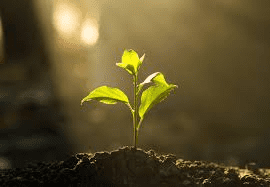Environment is the primary factor that influences plant growth and development and has also the greatest effect on crop distribution on the earth. The world population is steadily increasing each year creating demand for more food to feed the people adequately.
Crop production is practiced over a wide range of agro-ecosystem ranging from very wet to very dry regions and across temperate to tropical and semi-arid zones of the world.
The effects and interrelationships between the climatic factors like temperature, rainfall, solar radiation CO2 concentration etc. determine the type of crops cultivated in the various regions.
In this article, we will be considering the most important environmental factors that affect crop growth and development.
Weather elements over the years determine the type of climate which influences the type of plants/crops cultivated. These elements of weather are fundamental to crop growth.
The rate of growth of roots, stem and leaves depends on the rate of photosynthesis which in turn depends on light, temperature, moisture and carbon dioxide concentration.
In this article we will explain the climatic factors which affect crop growth and production. We will also be considering the most important environmental factors that affect crop growth and development. These factors include:
- Light
- Water
- Temperature
- Wind
- Soil salinity and sodicity
1. Light
The primary source of light is the sunshine. The production of sugars by plants takes place only in the presence of sunlight.
In regions of poor sunshine, photosynthetic activity and growth of plants are limited. Abundant sunshine, adequate rainfall and fertile soils promote luxuriant growth of plants as witnessed in the tropical regions.
2. Water (Rainfall)

For survival of life all living organisms require water. Adequate rainfall or water availability is the most important environmental factor that limits growth and survival.
Apart from rainfall, there are rivers, lakes, wells that supply irrigation water to supplement rainfall water. These sources also depend on rains for water supply. Thus rain is the only source of water to crops, either directly or indirectly.
Rainfall received by plants at the desired quantity and at the right time is an invaluable gift from nature. Insufficient rains limit plant growth, while heavy rains are equally not good for crops.
Heavy rainfall causes erosion and leaching and at times creates water logged conditions in the field. Water logged situations do not permit aeration of soils leading to poor growth and development.
3. Temperature
Temperature influences a number of physiological activities in plants ranging from photosynthesis, respiration, evapo-transpiration and activities of soil micro-organisms.
There is an optimum range of temperature that is the most favourable for these processes and activities as any deviation will affect them.
4. Humidity

This is linked to rainfall. High humidity of the atmosphere reduces transpiration in plants and evaporation of soil moisture.
Read Also : How to treat Ruminant Animal Diseases
Low humidity on the other hand increases water requirements of plants thus increasing the cost of crop production through irrigation.
High humidity of the atmosphere reduces plant resistance to fungal diseases in some cases and encourages pest outbreak in some locations.
5. Wind
Wind helps in the pollination of crops, reduces atmospheric temperature. But it has its harmful effects.
Excessive wind promotes loss of water from soils through evaporation and transpiration thus more requirements from irrigation water.
Strong winds interfere with fruit setting and promotes fruit falling in fields especially orchards.
Matured cereal crops are always logged during strong winds leading to losses and increased cost of harvesting. Top soils are sometimes lost to wind especially in semi-arid zones.
6. Soil Salinity and Sodicity

Soluble salts are formed by the weathering of rocks and when they are not completely leached as in arid regions, the salts move down to the lower layers with the peculating rain water and move up to the surface again with the capillary rise of moisture.
As a result of up and down movements of soluble salts the concentration in the different layers therefore varies from time to time.
This is salinity. In soil sodicity, soluble salts formed by weathering that are not completely leached out of the soil but remained concentrated within the surface layers.
When the soluble salts like sodium, becomes the prominent base in the clay complex, sodicity condition will set in.
Upon saturation through moisture, the Na ion in the double ionic layer round the clay forms sodium hydroxide thereby creating an alkaline reaction to the soil solution.
The sodium hydroxide combines with the carbon dioxide of the soil air and forms sodium carbonate and this raises the pH of the soil to as high as 10 at times.
These two soil conditions are not conducive for plant growth and development. To grow crops under this condition requires high level of soil conditioning and amelioration.
In summary, from our study so far we have been able to identify a number of environmental resources that influence plant growth and development in a particular location and region.
These include weather elements and edaphic factors that are extreme. These climatic factors should be seen as interrelated for the over benefit of our crops.
Alarming variations in weather elements are very critical in our study of climate change. This is the most serious environmental problem facing humanity now.
Crop production is practiced over a wide range of agro ecosystems ranging from very wet to very dry regions and across temperate to tropical and semi-arid zones of the world.
The effects and interrelationships between the climatic factors like temperature, rainfall, solar radiation salinity and alkalinity of soils determine the type of crops cultivated in the various regions of the world.
Each of these weather elements and soil types has ranges that are favourable for plant growth and development. Extreme conditions call for concern in our study of climate change and its effects on our environmental resources that are necessary for our survival.
Read Also : Factors that affect African Land Snails Survival
